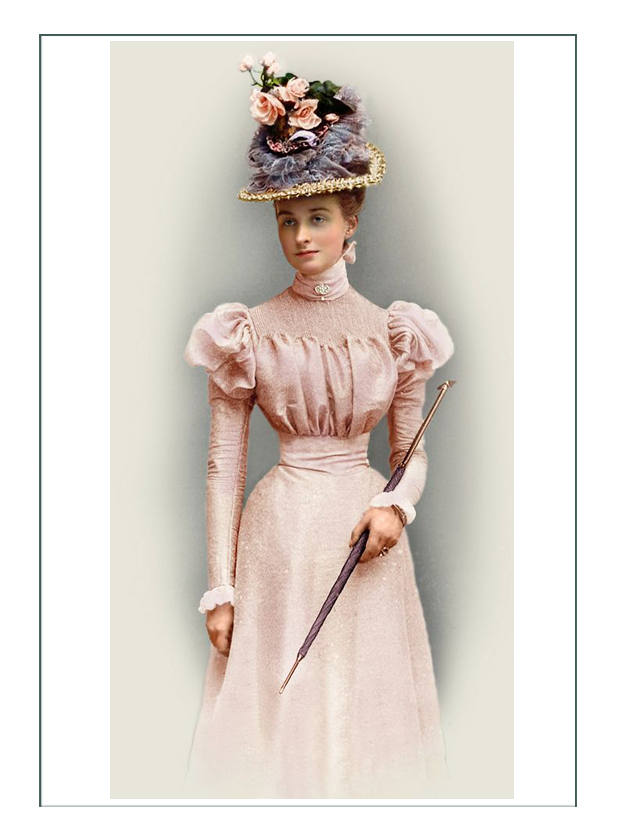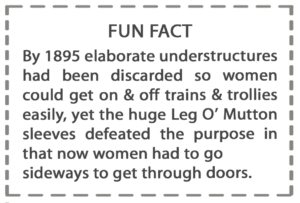
- 1895 falls at the very end of the Victorian Era. Prince Albert died in 1894, & Victoria’s reign was nearing its end
- Technically, the year marks the beginning of the Edwardian era with subcategories of La Belle Epoque, Art Nouveau, & the Gibson Girl
- It was a time of mourning for Victoria, when she established black for mourning, & further entrenched the need for appropriate ensembles to be worn for each event for those who could afford it
- It was also a time of new world liasons, as this next generation of English & French royal families were intermarrying
- Most countries, like France, had established Republics, & while the monarchies were not dispersed, they had much less power & influence
- The rich & powerful still played
- Under Edward, the strict rules of Victorian society took another twist which would be very expensive
- The Edwardian “Grand Dame” ruled society & set the standards for fashion & lifestyle

- Racing, riding, sports, & women in the workforce were becoming common
- The Edwardian concept kept those of high society intentionally away from work, as it was a deliberate attempt to live in a world of only leisure
- Edwardians had high tea, croquet on the lawn, parties to introduce their daughters to society, & excursions to the sea
- Counter-movements of the Aesthetics, & practicality for those not of the middle or high class who could afford to not work introduced a whole new world of apparel & attitude
- It was a time of the rise of the active woman, the suit, & Bloomers
- Sports such as cycling, skating, tennis, golf, bowling & calisthenics were now common for all women
- Upper class women went yachting, shooting, & riding
- Clothing was modified to accommodate the new activities
- Split skirts, short skirts, bloomers, & (some) less restrictive corsets became acceptable in those venues, although the most restrictive, the “S” corset of high fashion would parallel that freedom
- Industry meant mass production of textiles & garments, which meant fashion was available to those in all walks of life
- There was class distinction, so the higher society bought from custom designers in Paris, while the lower could mimic the appearances with ready-made or catalog goods
- New technologies in fabrics, materials, & notions meant laces, trims, & accessories were readily & easily available for all
- Bright synthetic dyes made the deep purples, blues, & reds available that had been previously reserved only for the elite
- Early versions of plastics & rayons were evolving for jewelry, buttons, & everything having to do with daily life such as the new “Bakelite” telephone
- Because everything was so new, for the first time in history men & women had something equal – everyone had to figure out how to use the new-fangled gadgets
- Automobiles had been invented, trains crossed the continent, & people had expendable income to travel, communicate, & see what others were doing
- With fast transit across mountains & oceans, ideas were moving as quickly as people
- Women would soon have the right to vote, & many of all classes fought for that and other causes
- At this time “old met new” as the old ways gave way to a much faster paced, more technological, & open-minded world emerged for women

Click here to go to Kateri’s Fashion History page (next)
Click here to go to Kateri’s Design Development page
Click here to go to Kateri’s Main Page with the finished project
